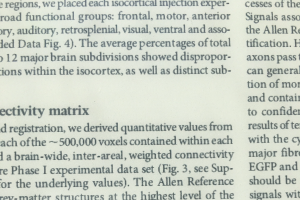The Advanced Scientific Programming in Python (ASPP) summer school has had 10 successful iterations in Europe and one iteration here in Melbourne earlier this year. Another European iteration is starting next week in Camerino, Italy.
Now, thanks to the generous sponsorship of CSIRO, and the efforts of Benjamin Schwessinger and Genevieve Buckley, two alumni from the Melbourne school, and Kerensa McElroy, Agriculture Data School Coordinator at CSIRO, the Asia Pacific fork of ASPP gets its second iteration in Canberra, Jan 20-27, 2019.
Key details
- The workshop runs January 20-27, 2019 at the Australian National University in Canberra, Australia.
- topics include git, contributing to open source software with github, testing, debugging, profiling, advanced NumPy, Cython, and data visualisation.
- hands-on learning using pair programming
- free to attend (but students are responsible for travel, accommodation, and meals)
- 30 student places, to be selected competitively
- application deadline is Oct 7, 2018, 23:59 Anywhere On Earth
- website: https://scipy-school.org
- FAQ: https://scipy-school.org/faq
- apply: https://scipy-school.org/applications
Background
Three years ago, I had the privilege of teaching the 2015 ASPP school in Munich. It turned out to be a fantastic teaching experience (I have taught in 2 more since), and more importantly, it was a fantastic experience for the students. Students are selected for the school to fit a certain profile, neither too novice nor too advanced. As such, participants selected for the school are almost guaranteed to learn a great deal.
Indeed, almost every iteration of the school has been co-organised by former students. Sure enough, with the help of two students from the Melbourne instance, we will be able to have a new iteration in Canberra this January.
Course description
Scientists spend increasingly more time writing, maintaining, and debugging software. While techniques for doing this efficiently have evolved, only few scientists have been trained to use them. As a result, instead of doing their research, they spend far too much time writing deficient code and reinventing the wheel. In this course we will present a selection of advanced programming techniques and best practices that are standard in industry, but especially tailored to the needs of a programming scientist. Lectures are devised to be interactive and to give the students enough time to acquire direct hands-on experience with the materials. Students will work in pairs throughout the school and will team up to practice the newly learned skills in a real programming project — an entertaining computer game.
We use the Python programming language for the entire course. Python works as a simple programming language for beginners, but more importantly, it also works great in scientific simulations and data analysis. We show how clean language design, ease of extensibility, and the great wealth of open source libraries for scientific computing and data visualization are driving Python to becoming a standard tool for scientists.
Who is eligible?
This school is targeted at Master/PhD students, postdocs, and academic staff and technicians from all areas of science. Competence in Python or in another language such as Java, C/C++, MATLAB, or Mathematica is absolutely required. Basic knowledge of Python and of a version control system such as git, subversion, mercurial, or bazaar is assumed. Participants without any prior experience with Python and/or git should work through the proposed introductory material before the course.
We have strived to get a pool of students that is international and gender-balanced, and have succeeded, with gender parity in the last five schools.
More questions
If you have any questions, contact info@scipy-school.org.
Please circulate this announcement widely! And follow @scipyschool for further developments.
Juan.




 I can barely tell that it’s not just a slightly low-res print.
I can barely tell that it’s not just a slightly low-res print.